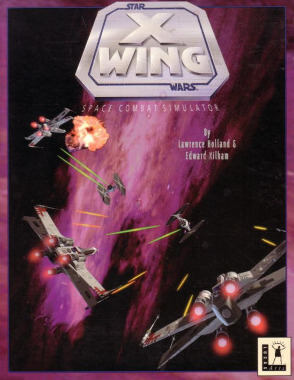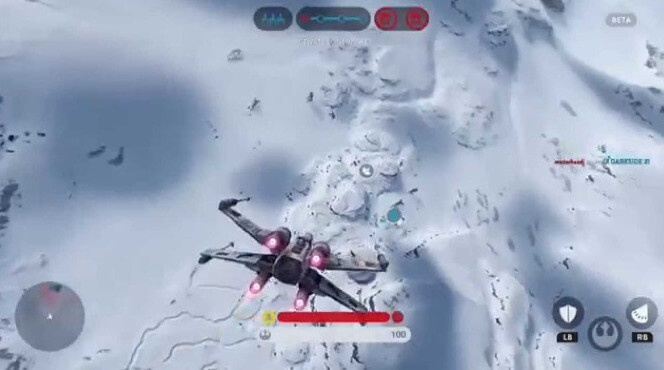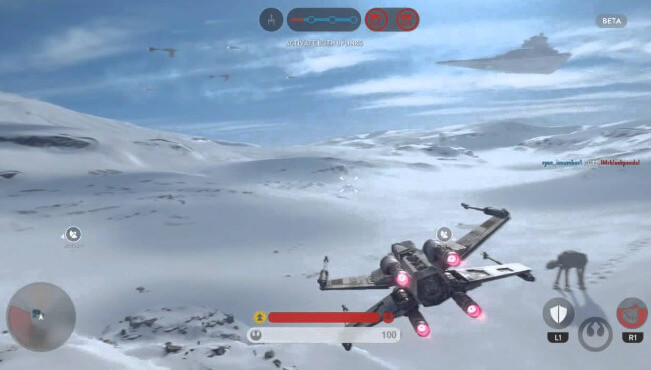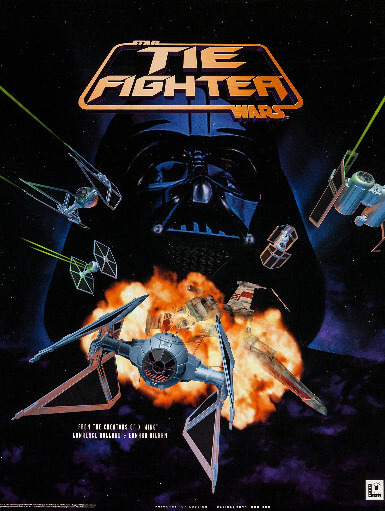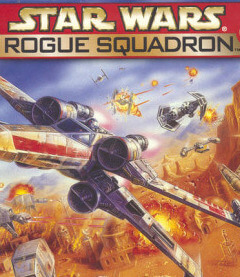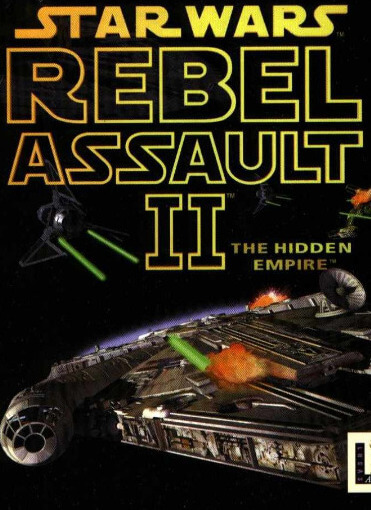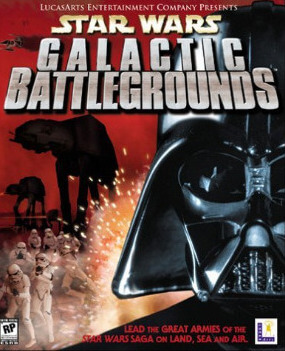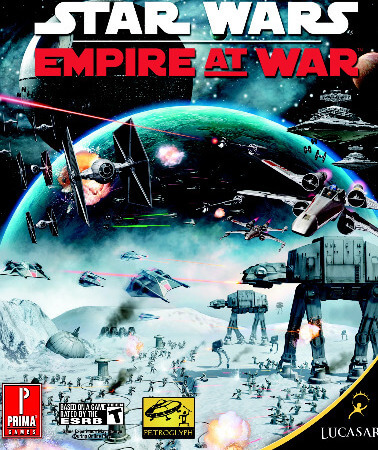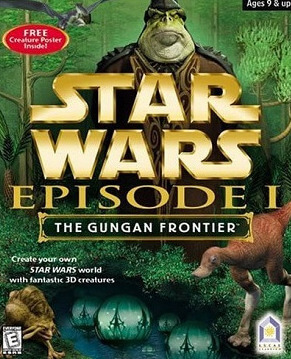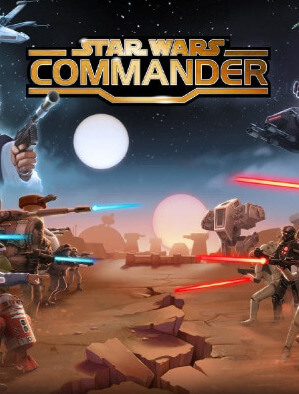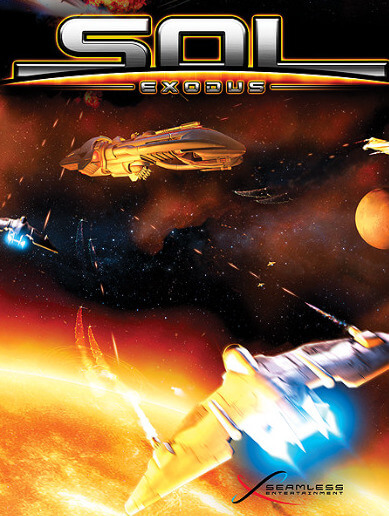After choosing a pilot file to play with, the player is presented with a "concourse" aboard the Mon Calamari Star Cruiser Independence. From here, the player can choose between flying in a proving ground, historical simulator, or tour of duty. In the proving ground, the player maneuvers a starfighter through a series of gates within a time limit. The historical simulator depicts missions not tied to the main storyline. The game's plot is advanced through tour of duty operations. When the player completes a tour of duty operation, it becomes available for replay in the historical simulator. In addition to the flight options, players can access a technical room that shows images of the game's spacecraft, and a film room for reviewing recorded flight data.
As a space flight simulator game, X-Wing puts the player at the controls of various starfighters in space combat against enemy spacecraft. Drawing some influence from Star Raiders (1979), the game is played in first-person from inside the cockpit. The initial game offered pilotable A-wing, X-wing, and Y-wing craft; the B-Wing expansion adds the B-wing as a playable vehicle.
All flight takes place in space; the player does not encounter gravity or atmospheric effects. The starfighters are equipped with recharging laser weapons and limited warheads. The player controls power allocation between lasers, deflector shields, and engines. Charging the lasers and shields slows the player's craft, giving effective power management an important role in gameplay. The player can toggle the firing mode (separate or linked) of each weapon type, and balance the shields forward, aft, or evenly.
Missions types include dogfights, escorting or disabling other vessels, convoy attacks, and strikes on capital ships. During missions, the player can send orders to friendly craft. In the original floppy disk version, the player can assign other saved pilot profiles to be his or her wingman; the higher the rank of the saved profile, the better the computer-controlled wingman would perform. This was removed from subsequent releases.
The player earns points for each tour of duty mission by completing objectives and destroying enemy spacecraft. Medals and ranks are awarded for campaign progress; if the player dies in combat, his or her score and awards are lost, but campaign progress is preserved.
Reception
Star Wars: X-Wing was a commercial hit that surpassed the predictions of LucasArts. Its launch shipment of 100,000 units sold out during its debut weekend; nearly 500,000 units in total were ordered by retailers by December 1993.
X-Wing, which one author later stated "skillfully captured the feel" of the Star Wars films, was a best-seller in 1993. In its 1992 preview of the game Computer Gaming World wrote that the developers "are taking aim at Chris Roberts and his megahit Wing Commander series". The magazine said in its 1993 review that some of the missions were imbalanced, and criticized the need to identify and execute precise "solutions" to them. It praised the flight model as "excellently executed and a joy to play", however, and concluded "I enjoyed the experience tremendously" and looked forward to expansion disks and sequels. A 1994 survey in the magazine later gave the game four stars out of five, stating that it was "A superb rendition of the Star Wars universe, albeit victory conditions in the scenarios are a bit too structured and rigid". Compute! said X-Wing succeeds at being "the first authentic space-combat simulator", comparing it favorably to the contemporaneous Wing Commander, while calling the game's rigid structure, leaving no margin for error, "controversial". A reviewer for Next Generation said X-Wing "was a deserved, runaway hit", and scored the Macintosh conversion four out of five stars. He praised the updating of the graphics with texture mapping, light sourcing, and higher resolution, as well as the inclusion of the Imperial Pursuit and B-Wing expansion packs. He criticized that the game's infamously rigid difficulty had not been fixed in the Macintosh version, but found it an overall welcome port of an outstanding game. In the following month's issue, Next Generation ranked X-Wing and Star Wars: TIE Fighter collectively as number 23 on their "Top 100 Games of All Time".
In 1994 Computer Gaming World stated that B-Wing was a better value than Imperial Pursuit but "To the avid X-Wing disciple both expansion disks should be considered must-buy products".
X-Wing was named the best "general simulation" of 1993 by Computer Games Strategy Plus. It also received awards for "Simulation of the Year" from Computer Gaming World (with World Circuit), "Best Simulation of 1993" from Computer Game Review, and "Best Game of 1993" from Electronic Entertainment. In 1994 X-Wing won the Origins Award for "Best Fantasy or Science Fiction Computer Game of 1993", and PC Gamer US named X-Wing the 5th best computer game ever. The editors wrote, "For high-tech dog-fighting action, nothing can touch X-Wing." That year PC Gamer UK named it the second best computer game of all time, calling it "the only game of its type that we constantly find ourselves coming back to". In 1995 PC Gamer US presented X-Wing Collector's CD-ROM with its 1994 "Best CD-ROM Enhancement" award. The editors wrote, "This is enhancement above and beyond the call of duty, and sets the new standard by which all future CD editions will be judged." The Collector's CD-ROM was also named one of the top 50 CD-ROMs of 1996 by MacUser.
GameSpot called X-Wing "one of the best" Star Wars games and an example of how immersive a game can be; they specifically praised the game's graphics, attention to detail, audio, and story. The Keyan Farlander character later appears in two New Jedi Order books, and Hasbro in 2008 created a Keyan Farlander action figure. He also appears as a B-Wing pilot in the Star Wars: X-Wing and Star Wars: Armada miniatures games produced by Fantasy Flight Games.
